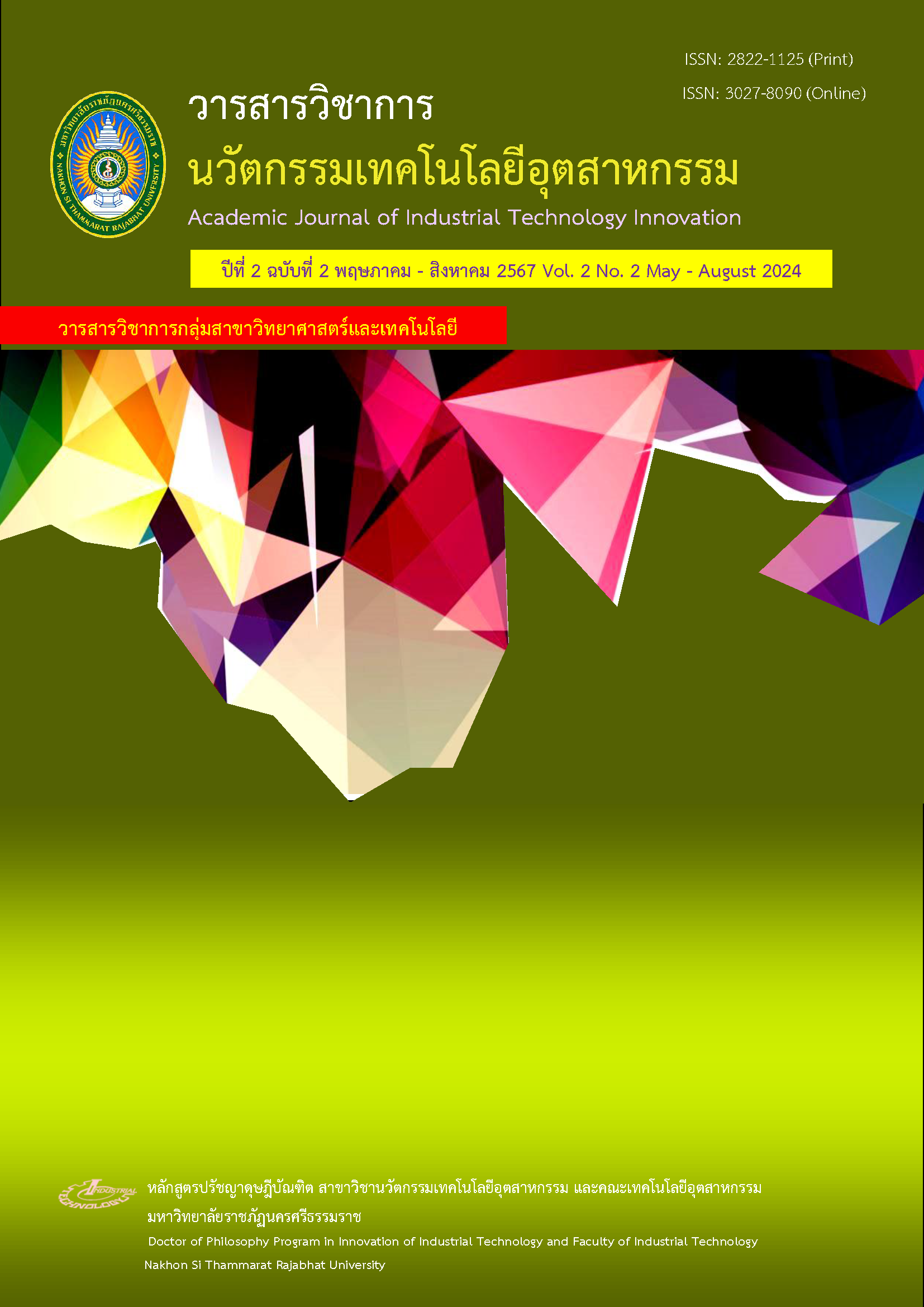A Comparison of Moving Average and Simple Exponential Smoothing Methods for Predicting Engine Oil Change Demand in Trucks: A Case Study in Songkhla Province
Main Article Content
Abstract
The objective of this research is to predict the demand for engine oil changes in large trucks using monthly data from a case study service center between 2019 and 2021. This study focuses on comparing the performance of various prediction methods to determine the most suitable approach for forecasting future service demands. The prediction methods employed in this research comprise two main approaches: Moving Average (MA) with 3 and 5-month periods, and Exponential Smoothing with alpha (α) values of 0.1 and 0.5. Each method was applied to the same dataset to generate predictions, followed by a performance evaluation. To assess prediction accuracy, three criteria were utilized: Mean Absolute Percentage Error (MAPE), Mean Absolute Error (MAE), and Mean Squared Error (MSE). The results demonstrate that the Exponential Smoothing method with an alpha value of 0.5 yields the most accurate predictions based on MAE, MSE, and MAPE, indicating its superior ability to predict values closely aligned with actual figures. This method is recommended for planning engine oil demand in large trucks at the case study company.
Article Details

This work is licensed under a Creative Commons Attribution-NonCommercial-NoDerivatives 4.0 International License.
Articles published in this journal are copyrighted by the Faculty of Industrial Technology. Nakhon Si Thammarat Rajabhat University
In addition, research results and academic works published in the journal It is the independent opinion of the author. The author is responsible for any legal consequences that may arise from the published article. The editorial team and the journal's production team, we don't always have to agree.
References
Sathapongpakdee, P., 2022. Industry Outlook 2022-2024: Road Freight Transportation Service. [Online]. Available: https://www.krungsri.com/en/research/industry/industry-outlook/logistics/road-freight-transportation/io/road-freight-transportation-2022-2024. Accessed 10 August 2024.
Hwang, W. and Lee, J., 2014. “A new forecasting scheme for evaluating long‐term prediction performances in supply chain management,” Int Trans Operational Res. 21(6): pp. 1045–1060.
Harly, J., Nababan, M., Bintang, L. H., Rizal, R. A., and -, A., 2023. “Comparison of Single Exponential Smoothing Method with Double Exponential Smoothing Method Prediction of Salt,” JUSIKOM PRIMA. 6(2): pp. 1–5.
Budiarto, D. D., Miftahudin, M., and Riwurohi, J. E., 2024. “Application of Exponential Smoothing Method for Forecasting Spare Parts Inventory at Heavy Equipment Distributor Company,” Eduvest. 4(3): pp. 959–976.
Huriati, P., Erianda, A., Alanda, A., Meidelfi, D., and Suryani, A. I., 2022. “Implementation of The Moving Average Method for Forecasting Inventory in CV. Tre Jaya Perkasa,” International Journal of Advanced Science Computing and Engineering. 4(2): pp. 67–75.
Rachmat, R. and Suhartono, S., 2020. “Comparative analysis of single exponential smoothing and holt’s method for quality of hospital services forecasting in general hospital,” Bulletin of Computer Science and Electrical Engineering. 1(2): pp. 80–86.
Ahmar, A. S., 2020. “Forecast Error Calculation with Mean Squared Error (MSE) and Mean Absolute Percentage Error (MAPE),” jinav j. inf. vis. 1(2): pp. 94–96.
Robeson, S. M. and Willmott, C. J., 2023. “Decomposition of the mean absolute error (MAE) into systematic and unsystematic components,” PLoS One. 18(2): pp. 1–8.
Hodson, T. O., Over, T. M., and Foks, S. S., 2021. “Mean Squared Error, Deconstructed,” J Adv Model Earth Syst. 13(12): pp. 1–10.
Karmaker, C. L., 2017. “Determination of optimum smoothing constant of single exponential smoothing method: a case study,” International Journal of Research in Industrial Engineering. 6(3): pp. 184–192.
Marpaung, N. L., Salim, K. R., Amri, R., and Ervianto, E., 2019. “Application of Single Exponential Smoothing in Forecasting Number of New Students Acceptance,” Int. J. Technol. Eng. Stud. 5(6): pp. 169–182.
Rahyul, A., 2016. “Forecasting sales at widodo makmur rice shop using the moving average method,” M.S. thesis. Nusantara Univ., Jakarta, Indonesia.
Khairina, D. M., Muaddam, A., Maharani, S., and Rahmania, H., 2019. “Forecasting of groundwater tax revenue using single exponential smoothing method,” In Proceedings of E3S Web of Conferences, 2019, 125, p. 23006. [Online]. Available: https://www.e3s-conferences.org/ articles/e3sconf/abs/2019/51/e3sconf_icenis2019_23006/e3sconf_icenis2019_23006. html. Accessed: 15 July 2024.
Dey, B., Roy, B., Datta, S., and Ustun, T. S., 2023. “Forecasting ethanol demand in India to meet future blending targets: A comparison of ARIMA and various regression models,” Energy Reports. 9(1): pp. 411–418.
Chelliah, B. J., Latchoumi, T. P., and Senthilselvi, A., 2024. “Analysis of demand forecasting of agriculture using machine learning algorithm,” Environ Dev Sustain. 26(1): pp. 1731–1747.


